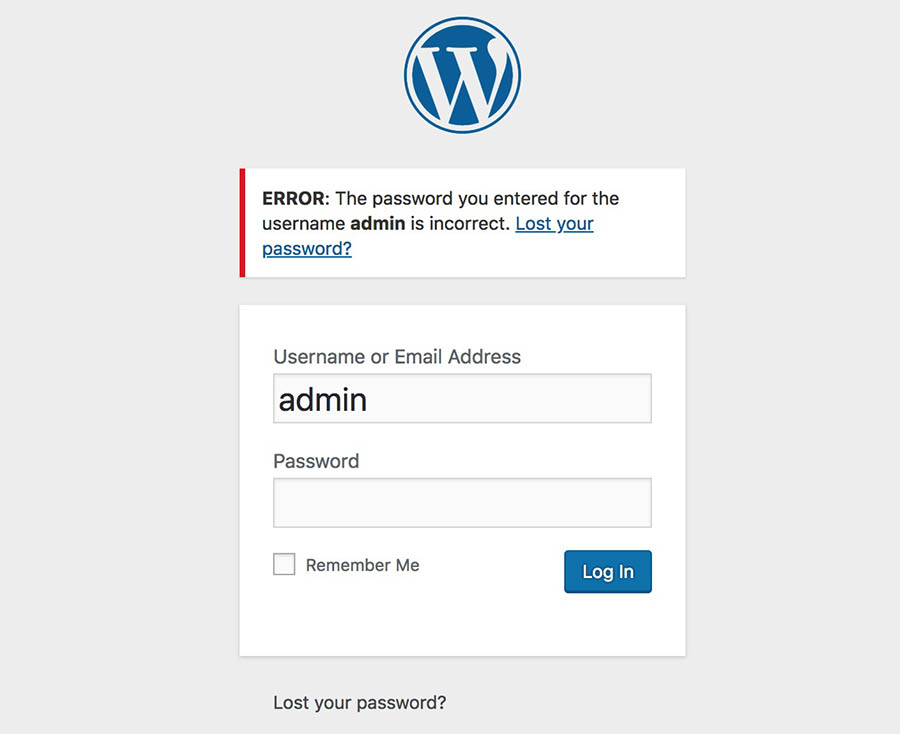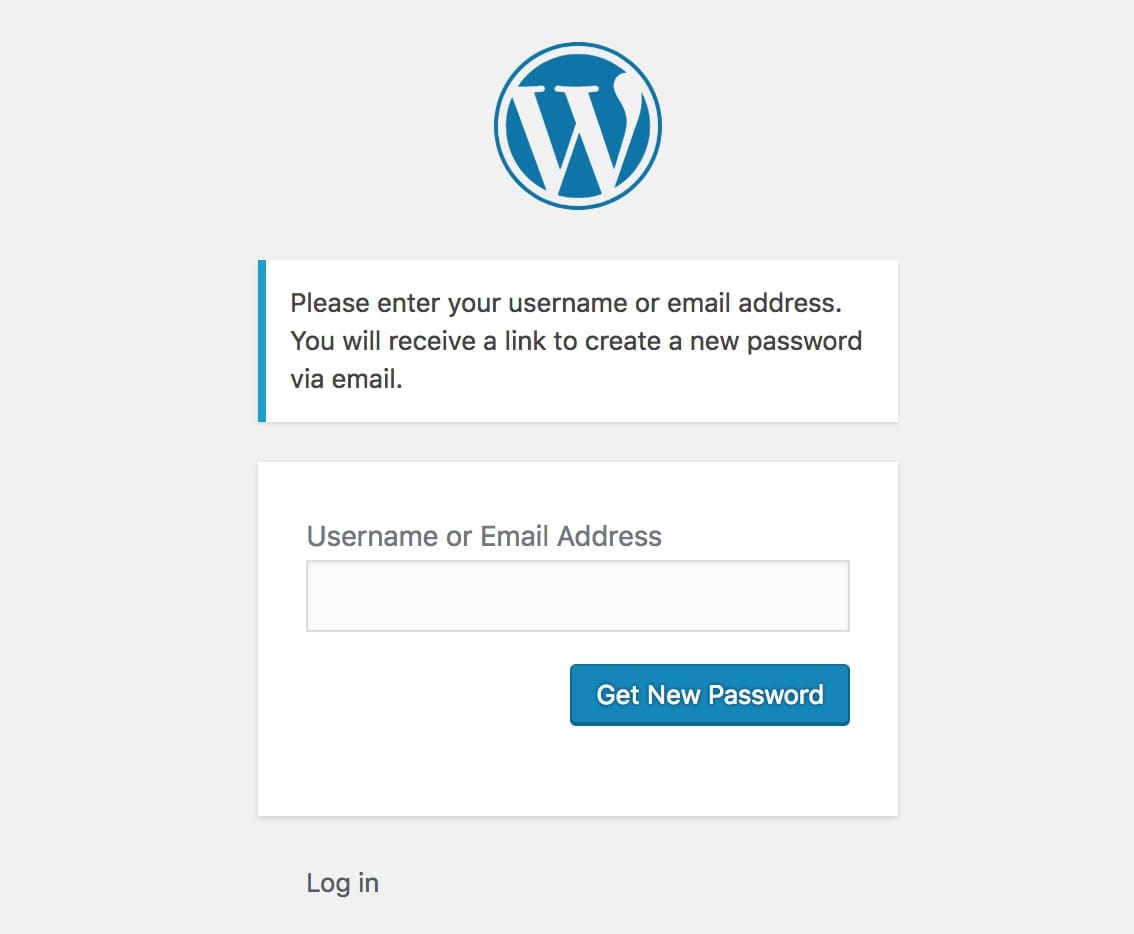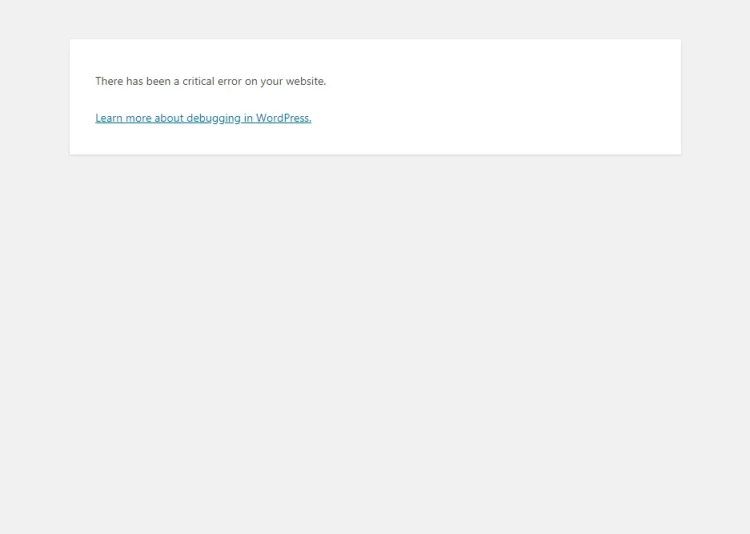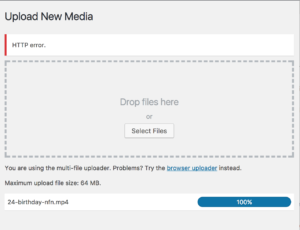6 Common WordPress Errors & How To Solve Them
WordPress is an undoubtedly strong software application. You will, however, encounter technological difficulties from time to time. These WordPress problems may be aggravating and waste time. Fortunately, you can fix the majority of these issues on your own. By being familiar with the most frequent WordPress problems and their root causes, you should be able to resolve the majority of difficulties on your site. In this post, we'll go over a few useful tactics to get you started. Then, we'll go over six of the most frequent WordPress issues and demonstrate how to resolve them. Let's get started!
Click on (+) sign to read more , (-) sign to read less , don't forget to rate & comment .
Being locked out of your WordPress admin area is a little different. In general, this occurs when you forget your password.
There’s no reason to panic now. You can still access your site even if you’ve forgotten your password. To begin, go to the login page and click the Forgot your password? link. You may retrieve your password by entering your username or email address here.

This will work in the great majority of circumstances. Unfortunately, there may be times when this service is unavailable, disabled, or you do not have access to the email address you used to sign up.
If this is the case, you can reset your password using phpMyAdmin. Nevertheless, utilising this approach might be problematic since you may inadvertently cause difficulties with your site or database. As a result, this procedure should only be used as a last option. The procedure will differ based on your web host and setup.
Next, launch phpMyAdmin.
Locate your user table, which is generally called wp users or something similar. After you’ve found it, navigate to your unique user account and click Edit.
You may now alter the information on your profile, including the password. Change the current text in the user pass_row with your desired password.
When you save your changes, you may log in again with your new password.
The white screen of death is precisely what it sounds like: a featureless, blank screen. It may occasionally produce an error message:

This problem is usually caused by two things: plugins and themes. These might cause compatibility difficulties, preventing you from accessing your site.
However, there are a number of additional possibilities.
Here’s a brief rundown of what you may do to tackle this very difficult issue:
- Turn off your plugins: The most likely cause of the WSoD is a malfunctioning plugin, therefore disable them all and see if it resolves the issue.
- Turn off your theme: This problem might possibly be caused by your theme, therefore utilise SFTP to replace it with one of WordPress’ basic themes.
- Enable the WordPress debug mode: This is a valuable tool that allows you to view problems immediately on each page, which can assist you in determining the root cause of the WSoD.
- Clear your cache: Finally, even if the WSoD has been resolved, your site’s caching solution may lead you to display outdated files.
- Increase your memory capacity: Your website’s memory may have ran out. By modifying your php.ini file, you may increase your maximum limit.
In the great majority of situations, these procedures will resolve the WSoD. If you continue to have problems, you should contact your hosting provider’s support staff for assistance.
Another issue that might be painfully unclear regarding the underlying problem is the Internal Server Error.
Thankfully, unlike the WSoD, this mistake has fewer probable causes. It appears when an unknown issue with the server occurs, and is usually caused by one of the following:
.htaccess is a file that specifies how your WordPress site connects with its server. This file can be used to strengthen the security of your website and to override some of the server’s default settings. All you have to do to determine if this file is causing the Internal Server Error is deactivate it.
Just rename the file to deactivate it. If this resolves the issue, all that remains is to create a new, bug-free .htaccess file. There is no need to make any actual modifications here. Just click Save Changes to create a new file. This should, hopefully, address the problem.
Most internet users are probably familiar with the 404 Error.
It indicates that the server could not locate the requested page. This error is frequently connected with broken links and altered URLs, but it can also appear even if the page you’re seeking for should be available.
When this happens, the.htaccess file is most likely to blame. This file also manages your site’s hyperlink structure, and it’s likely that it’s wrongly redirecting your URLs. As a result, your initial step should be to regenerate a new.htaccess file using the techniques mentioned in the preceding section.
But, if this does not cure the issue, you may need to re-upload the.htaccess file. The simplest technique is to create a new file, name it.htaccess (don’t forget the period, and no file extension is required), and put in the following default code:
# BEGIN WordPress
<IfModule mod_rewrite.c>
RewriteEngine On
RewriteBase /
RewriteRule ^index.php$ - [L]
RewriteCond %{REQUEST_FILENAME} !-f
RewriteCond %{REQUEST_FILENAME} !-d
RewriteRule . /index.php [L]
</IfModule>
# END WordPressYou may now upload the file to the root folder of your website. This should address the 404 problem you’re getting in most circumstances.
You’ve undoubtedly seen this error appear after a site has attempted (and failed) to load for a while. It indicates that the server is having difficulty loading the webpage and has effectively given up.
This might occur for a number of reasons, the most prevalent of which is that your site lacks the resources it need to perform effectively. If you’re utilising shared hosting, for example, another site might be taking your server’s resources. Alternatively, your site may have reached its bandwidth limit.
As a result, if you notice this issue repeatedly, you might think about increasing your hosting plan. A higher-tier plan can help you prevent slowdowns and downtime since your site will have more server resources and will not be affected if other sites experience a traffic surge.
If your site is putting a lot of load on the server, the ‘connection timed out’ message may appear. As a result, we recommend that you optimise your site for speed, remove any resource-hogging plugins, and review your theme to see if it’s causing performance issues. You may wish to boost your PHP memory limit once again.
Images on your WordPress website can ‘break’ in a variety of ways. They may show wrongly after you upload them, or they may not appear at all. In either case, the problem is most likely caused by improper file permissions.
This essentially implies that the site is unaware that you have permission to add and access the files with which you are attempting to work. This might happen if your site is hacked or if a plugin mistakenly changes your rights. Thankfully, there is a simple solution.
You’ll need to use SFTP to access your site once more. This time, you’ll want to look for the uploads folder in the wp-content directory.
You do not, however, wish to open this folder. Rather, right-click on it and choose File permissions. This will display the permissions for the folder.
Set the Numeric value to 744 to allow the owner (i.e., you) to read and write uploads. After you’re finished, click OK, and the updated permissions will be implemented.
You must repeat this step for every files within the folder, so right-click on uploads and choose File permissions once more. Set the value to 644 and enable the Recurse into subdirectories option this time. You must also choose Apply to files only.

When you save your adjustments, your site’s Media Library should resume regular operation. Uploading an image to your admin dashboard will allow you to test this. If the problem persists, repeat the previous steps, but change the permission value for the uploads folder to 755 rather than 744.
Problems with WordPress are quite infrequent, but when they do occur, they may be extremely annoying. Nonetheless, most difficulties are frequently easier to resolve than they appear at first look.
Are you prepared to expand your WordPress website? Have a look at GauravGo, our managed hosting option. With a free domain name, a free SSL certificate, and 24 hour customer service. We also provide a range of hosting solutions, so you’re sure to find one that meets your needs and suits your budget. Find out more about your plan options now!
